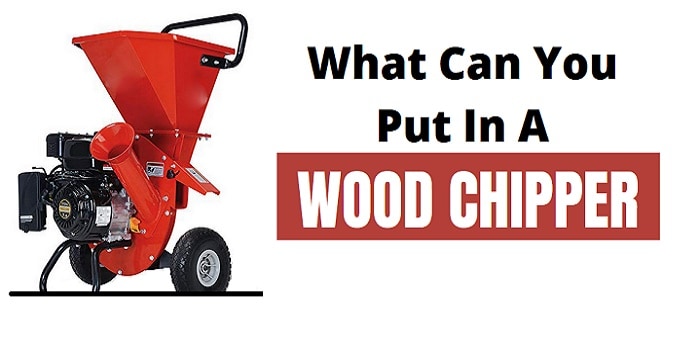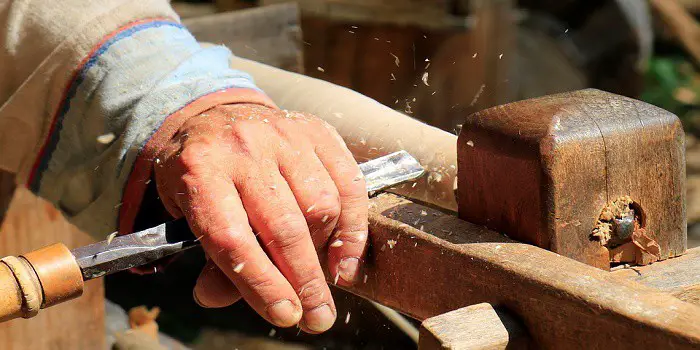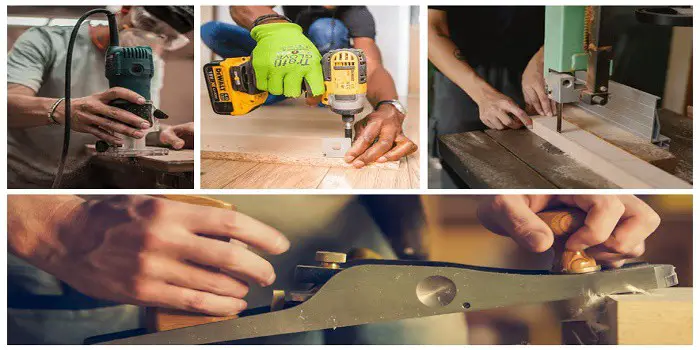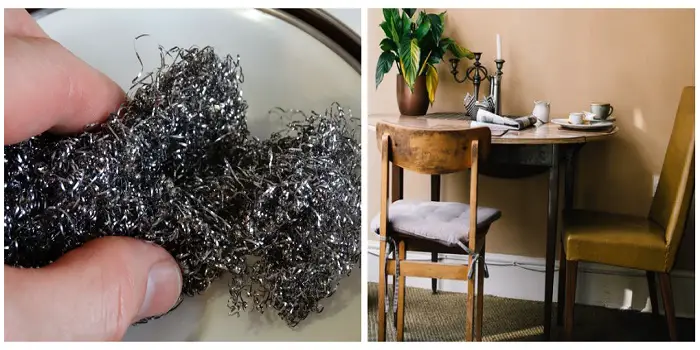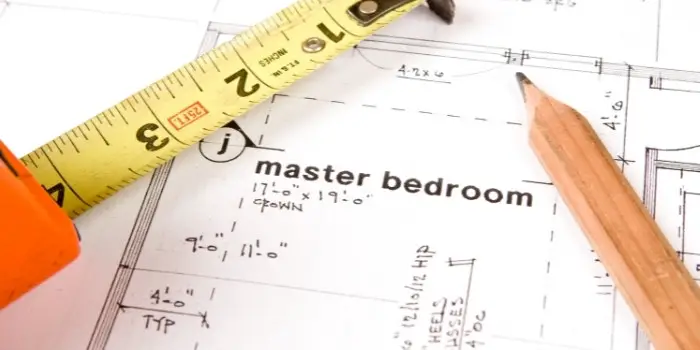
Carpenters’ pencils are tools used to mark wood and are usually made of wood with a graphite core often known as the “lead.”
These pencils are used to clearly mark visible lines on almost all types of surfaces regardless of the material or the presence of grain.
Lines and shapes are marked into it and then used as guides for shaping and cutting the materials.
Alongside carpentry, these pencils are also commonly used by bricklayers and builders as well as a variety of other trades since they are made for use on concrete, stone, and timber.
Even so, these pencils may not work very well on some glazed or polished surfaces. In this article, we’ll take a more in-depth look at carpenter’s pencils.
What Are They Made From?
Most carpenter’s pencils have a similar composition. The main body of this type of pencil is often made of high-quality hardwood.
The types of hardwood that you’ll see being used to make pencils for the carpenters’ trade, among others in the building profession, include ash, oak, and beech woods.
These types of wood are popular choices due to their strength and remarkable durability.
The “lead” of the pencils earned its name because a long time ago, the cores used to be crafted out of the lead.
These days, modern carpenter’s pencils instead use graphite to manufacture the cores.
Graphite is a mineral that is composed of carbon atoms. It has been used for centuries as the core of a pencil and has the nickname “writing stone.”
Why are Carpenters’ Pencils Flat?
Carpenters’ pencils are ideally flat-shaped and not like the common round version of pencils that you used in your school.
The key reason why carpenter’s pencils are made square or rectangular in shape is it stops them from rolling away when it’s placed on a slanted surface.
Carpenters don’t always put their pencils back in their pockets while woodworking.
They set the pencil aside on a flat surface that can be picked up quickly from where they left it to use again.
A few other reasons why these pencils are designed differently include the following:
- The broader stem makes it easier to hold while working
- These contain more lead in them, and when sharpened properly, the flat design makes the lead harder to break
- These pencils have a larger lead (around 6 to 7 inches) which means they can be used to make bigger, clearer markings for a long without breaking.
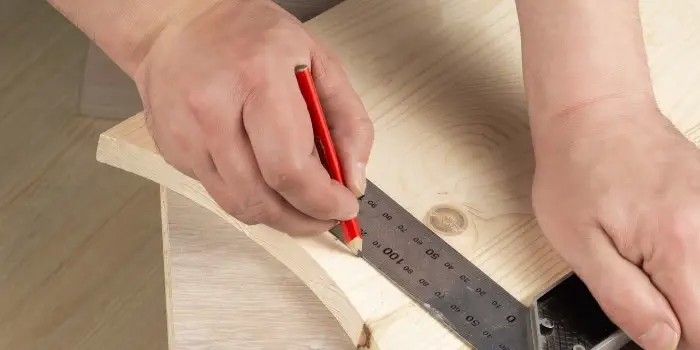
Different Types of Carpenter’s Pencils
There are various kinds of carpenter’s pencils available. Their main functions are all the same, but they differ in a few ways.
1- Soft Lead Pencils
Soft lead pencils wear away through friction more easily than harder lead.
They tend to leave behind a heavier, darker mark on the material. These carpenter’s pencils are best suited for use on newly hewn timber and softwood.
The markings made by these pencils can easily be removed with a sheet of fine sandpaper. Just rub it gently along the wood grain, and you are done.
2- Medium Lead Pencils
This type of lead pencil wears away at a steadier rate than some other types of lead pencils.
They leave behind a mark that is between the fine, light mark of a hard lead pencil and the heavy, dark mark of soft lead. They are best for general purposes and writing.
3- Hard Lead Pencils
These carpenter’s pencils are by far the most abrasion-resistant and feature a finer, lighter mark on surfaces.
They are best used for brick, hardwood, and plastered walls.
These carpenters’ pencils can be sharpened free-hand using a piece of fine-grit sandpaper, a utility knife, or a good sharp whittling tool.
4- Solid Lead Pencils
Some types of carpenter’s pencils have no wood at all. This type of carpenter’s pencil is practically just a stick of non-toxic graphite with nothing else.
They are both water and smudge resistant as well as uniquely flexible, so you don’t have to worry about them breaking in your pocket.
With no need for sharpening, solid lead pencils tend to be more durable than conventional carpenter’s pencils.
They are best suited for paper, wood, and concrete and do not need to be sharpened.
5- Mechanical Pencils
Mechanical pencils have harder leads that can be used on rough, dense material without breaking.
This type of pencil has a push-button top that lets the lead out a little at a time as you need it instead of exposing it all at once.
In terms of carpenter’s pencils, mechanical pencils function the same but have square-shaped lead.
They are heavy-duty and strong, with varying levels of lead hardness for you to choose from.
They are best used on brick, metal, paper, and wood, but they are not good for use with glass.
6- Tile Marker Wax Pencils
These pencils are a bit different in the way their cores are made from wax and commonly use bright colors to ensure visibility.
They are best used to mark ceramic tiles, metal, plastic, and glass. These carpenter’s pencils don’t work well on porcelain tile or porous materials.
To remove the marks made from these pencils, you will most likely need to use solvents like acetone or paint thinner.
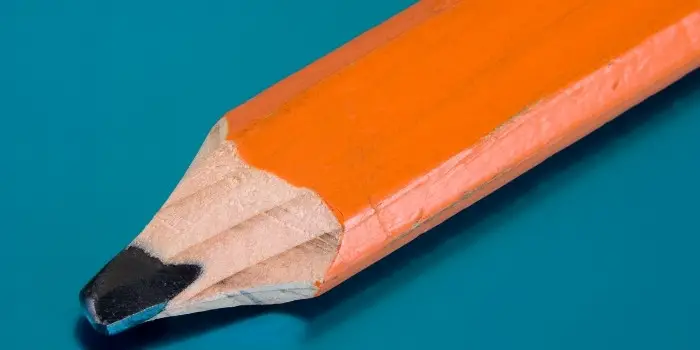
What are the Different Shapes of Pencil Tips?
Because of various needs, there are different pencil tip types for different jobs.
The most common among them are fine point tips, chisel tips, flat tips, and ornate types.
These various types of pencils can come in handy for specific projects, and so often, carpenters will keep more than one type of pencil in their toolkits.
a) Fine Point Tips
A fine point tip is the most common tip on carpenter’s pencils and is achieved by sharpening them with a pencil sharpener.
The fine point allows for greater accuracy due to the ability to draw fine lines.
b) Chisel Tip
This kind of tip is most commonly seen with carpenter pencils that are sharpened using a utility knife instead of a pencil sharpener.
A chisel tip lets you draw both thin and thick lines by changing the angle at which you complete your drawing project.
c) Flat Tip
The flat-tipped pencil is usually used by artists. Much like the chisel tip, you have to sharpen a flat tip with a utility knife to get it into the proper shape.
It can be used to mark both wide and narrow lines depending on the angle you use to hold the pencil.
A flat tip is especially well suited for shading in large sections within a project.
d) Ornate Tip
Similar to the hardness of the lead or core of a carpenter’s pencil, ornate tips are usually the go-to choice for those who like to carve.
Carpenters use this to their advantage by fashioning the lead into a very specific shape to be used on their projects.
What are the Best Pencils for Woodworking on the Market?
The ideal mechanical pencil is one that’s robust, ergonomic, have excellent grip, and is visible against a wood backdrop so that you don’t misplace it while drawing.
When choosing the pencil sets for your projects, also make sure that you check these factors…
- Quality Of lead
- Sharpening mechanism
- Shape and its ease of use
- Structure of the pencils and their gripping
Some of the best pencils for woodworking and carpentry that meet these criteria are:
- Pentel GraphGear Mechanical Pencil
- Uni-Ball Kuru Toga Mechanical Pencil
- MyLifeUNIT Mechanical Pencil
- rOtring Mechanical Pencil
- IRWIN Carpenter Pencil
- OX Tools Carpenter Pencils with Sharpener
- DIXON Industrial Carpenter Pencils
- BUSHIBU Flat Premium Quality Carpenter’s Pencil
- FastCap Fatboy Extreme Carpenter/Mechanical Pencil
A few pencil sets also come along with accessories such as a pencil holder/protector and sharpeners. Also, some sets contain crayons and markers that can be used for marking different surfaces such as metal, plastic, glass, etc.
So, choose the perfect set of pencils for your woodworking projects by looking at what you are precisely getting with them.
Final Thoughts
Carpenter’s pencils are excellent for marking lines on wood, metal, and other materials to allow them to be cut and shaped with ease.
They are made of graphite and usually wood and come in various types meant to be used in different applications, giving carpenters, builders, woodworkers, and more plenty of versatility when working on their various projects.
These versatile pencils make an important addition to any toolbox or belt.
Make sure you know how to use and sharpen them effectively because your typical pencil sharpener will not go to be up to the job.
A quick video below will help you get an idea of how you can use your carpenter pencil best. So make sure you have a look if you aren’t very sure.
Share the post "What is Carpenter’s Pencil – Different Types with Uses"

Hi, I am Mark Garner a professional carpenter, woodworker, and DIY painter. I live in the small city of Peoria, Arizona as a semi-retired woodworker. I have started this blog with a simple motive to help you with my wood experience in this sector. If you like to know more about what I love doing and how it all got started, you can check more about me here.

